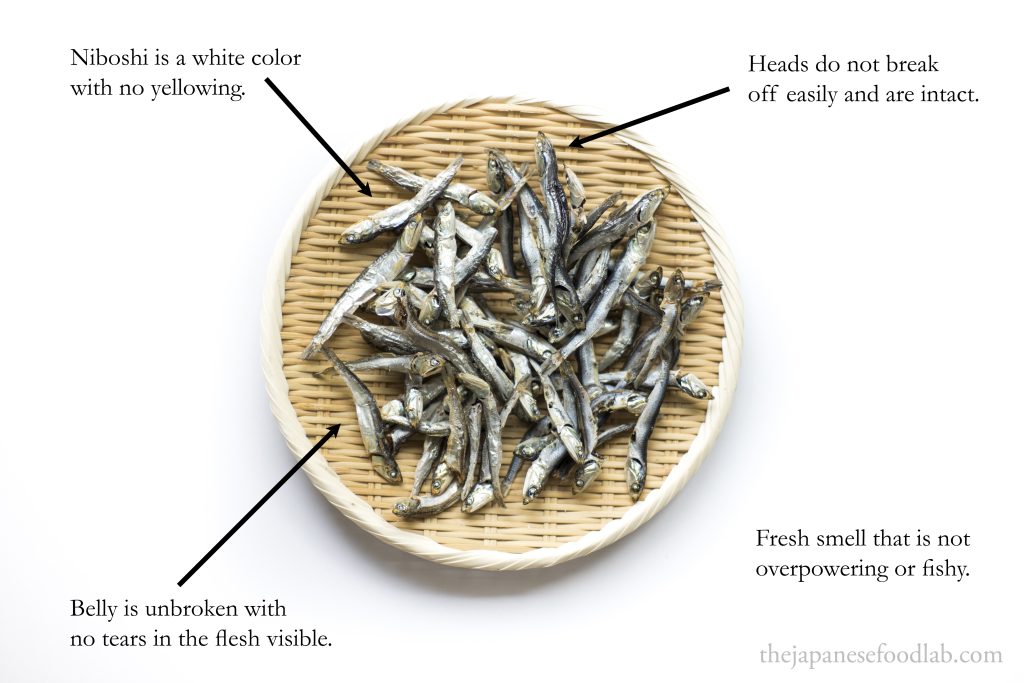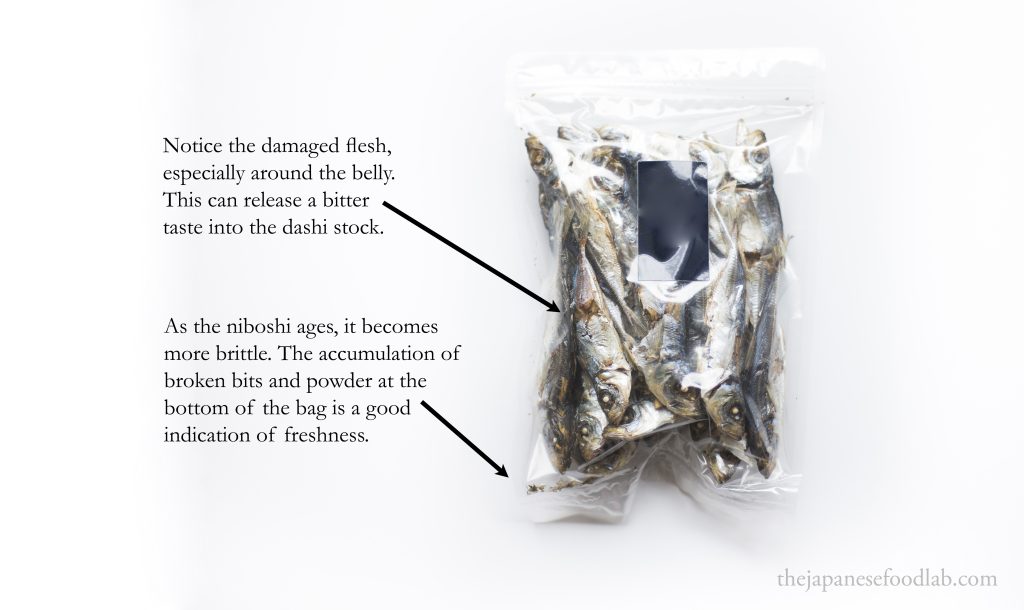So you’ve gone out of your way to source some niboshi, maybe even rarer ones like tai niboshi or ayu niboshi. But then you realize they’re usually more economical to buy in larger packets, and that many of them are actually dried whole with gills and organs in tack. So how long can you store them for? And what is the optimal way to preserve them for longer shelf life? In this article, we’ll cover some rules of thumb to get you started.

How to choose high quality Niboshi?
If you intend to store the Niboshi you buy for some time, your best bet is always to buy the highest quality niboshi available to you as they’re most likely to be processed and dried properly, whilst also being freshly packaged.
Powder in the bag
As the different types of niboshi get older, they become more and more brittle and start to break apart. As they bump and rub into each other during transport, it can sometimes lead to an accumulation of powder and bits at the bottom of the bag. To us, this is one of the most reliable and easy ways to judge if the niboshi you’re buying is fresh. A little bit of flaking and heads that have broken off is common and acceptable, but an excessive amount of powder at the bottom of the bag is a tell-tale sign that the niboshi has been sitting on the shelf for a long time.
Discolouration due to oxidation
Compared to katsuobushi that is sold in filets, the fact that niboshi are dried whole with all their innards means that they have a much higher proportion of fat content. This, combined with their small size which gives them a high surface area to volume ratio means that they oxidize at a much faster rate. Niboshi that has oxidized take on a yellowish hue and develop a much stronger fishy smell. While it’s usually impossible to judge the smell of the product when it’s packaged, fresh niboshi should retain its white silvery skin.
The change of color due to oxidation usually begins around the belly, and can be accompanied by the breaking apart of the abdomen area.

Best ways to store Niboshi
As the oxidation of fat is the main issue we’re trying to prevent, you can think of storing niboshi as very similar to storing a high quality olive oil. This means your enemies are sunlight, exposure to oxygen and high humidity.
This means that the duration for how long you can keep niboshi fresh also depends on your local climate. In Japan, most niboshi can be kept at room temperature for a few weeks before going bad. However, if you live in a country that is humid all year round, the niboshi can start absorbing moisture from the air, taking on a yellowish tinge and developing a pungent aroma in a matter of days.* Although rare, if the humidity is high enough, the niboshi can even grow moldy, which is a sure sign it has gone bad.
If you choose to store them at room temperature because you intend to use them up quickly, make sure to store them in a cool dark place, ideally in an airtight container or ziplock bag. Additionally, you may even choose to buy food safe desiccant packets to prolong their shelf life.
Regardless of the climate of where you live, once opened, we highly recommend storing your niboshi in an airtight container in the fridge or freezer. While this cannot completely stop oxidation, it can slow it down considerably. In the fridge, niboshi can last up to one or two months without any deterioration of quality.
If you store your niboshi in the fridge, you’ll want to make sure to avoid any build up of condensation when you take them out of the fridge as the water will damage the fish. As such, we recommend taking out what you need before quickly returning them to the fridge.
In the freezer, it’s possible to store them for as long as six months without loss of flavor. However, after three months, freezer burns usually begin and you’ll notice ice crystals starting to grow on the niboshi. For most other foods, the growth of ice crystals will start to destroy the texture of the food, making it mushy when cooked. However, because the niboshi is never directly consumed but only used to make stock, this isn’t as big of a deal.
If you’re looking at preserving them for the longest time possible, we recommend first removing the heads and innards of the niboshi first, then only freezing the bodies. Additionally, some people also swear by dry frying the bodies in a hot pan for 4 to 5 minutes to melt any fish fat, before draining and drying using kitchen towels, then only freezing. The key here is to dry fry without any oil and you’re trying to remove oil from the fish.
While niboshi is not a shelf stable at katsuobushi or kombu, we still see it as an ingredient with a long shelf life. We highly recommend developing the ability to make your own judgments using the appearance, smell and taste of the niboshi to judge its quality after storage. If you find your niboshi starting to go slightly fishy, you can dry fry them for a few minutes to reduce the smell before making soup stock.
Learn how to process niboshi for making dashi stock in our next article.
*On a side note, it’s worth noting how this is actually quite common in dried fish sold in South East Asia. Because of the high temperatures and humidities they experience, it’s actually impossible to prevent oxidation in their dried fish from the moment they’re processed. So much so that the pungent musky iron-like smell of oxidized fish is actually considered normal and part of the appeal of dried fish. We’ve always found it interesting to learn how what is valued in different cultures varies based on their geography.